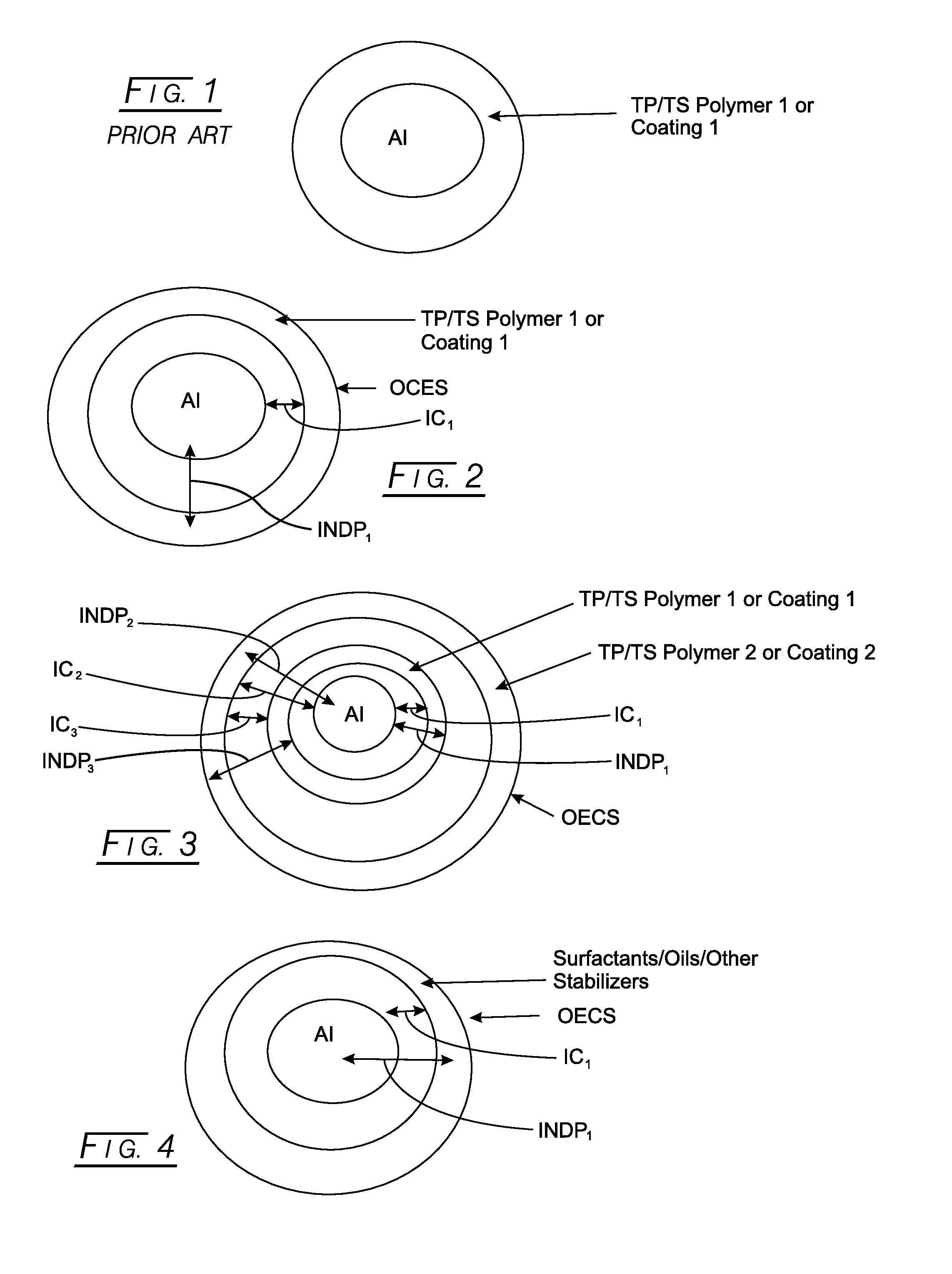Self-Assembling Polymer Particle Release System
a polymer and self-assembling technology, applied in the field of self-assembling polymer particle release system, can solve the problems of limited solubility parameters of vinyl monomer-unsaturated polyester of the patent, inability to use water solution/suspension application, and limited use of ai structures that are more water-solubl
- Summary
- Abstract
- Description
- Claims
- Application Information
AI Technical Summary
Benefits of technology
Problems solved by technology
Method used
Image
Examples
example 1
Polymer-AI Interaction Design Parameter and Interface Control Combinations
[0074]In this disclosure, a solubility parameter model is constructed for the AI of interest followed by determining which polymer structures have similar solubility parameters as the AI, such that a unique environment (interaction design parameter) is created between the AI-polymer interfaces. The active ingredients chosen for the polymer-AI combinations were Imazapyr, Imazethapyr, [both referred to as IMI's or Active Ingredients (AI's)]2,4-D, Dicamba, Nicosulfuron, and Sulfentrazone.
[0075]The starting point for the model was to match the Imazapyr and Imazethapyr known solubilities in different solvents with the Hansen solubility parameters (δd=dispersion; δp=polar; δh=hydrogen bonding; δt=total solubility parameter) for these solvents.
[0076]For example, in Table 1, below, Imazapyr, and Table 2, Imazethapyr lists the solubility (g / 100 ml solvent) of Imazapyr and Imazethapyr in four different solvents and thei...
example 2
Interaction Design Parameter (INDP1) Preformed Polymer Cage (Nano to Micron or Greater Size Range)
AI Interface Control (IC1) Combinations
[0092]In this example, the IMI acid or the IMI salt (isopropyl amine neutralized IMI acid) was combined with a crosslinked polymer (flower foam) and coated with a low surface energy material like a hydrophobic polymer (6% paraffin wax in hexane or silicon oil) and the results are shown in Table 10. From this study, one can clearly see the difference between the controls which start to be depleted after 4 to 6 washes, while the INDP1 / IC1 samples continue to deliver the IMI acid after 10 washes with 10-ml aliquots DI water when analyzed in a similar manner as Example 1.
[0093]The interaction design parameter (INDP1) for this example is the urea-formaldehyde crosslinked cage structures that are very water absorbing and thus interact very strongly with the water sensitive IMI acid and salt AI compounds. The interface control (IC1) polymer is a hydrophob...
example 3
Self-Assembly Controlled Release Polymer-AI Interaction Design Parameter (INDP1) and Interface Control (IC1) Combinations
[0097]In this disclosure, we have discovered that AI's and certain polymers (P) can form strong associations or complexes when combined together in a carrier solvent. These AI-P complexes when applied to and dried on a substrate (filter paper, plants, seeds, soils, or substrates) maintain some degree of their initial association properties, which strongly influences the controlled release of the AI in the presence of water or rain.
AI+polymer+carrier solvent[liquid AI-P initial complex or association]
[liquid AI-P initial complex or association]+Substrate[dried final Substrate-AI-P complex or association]
[dried final Substrate-AI-P complex or association]+water (rain) controlled release of AI
[0098]There are also other situations where the AI and polymer might not form a complex or association, but when applied to a substrate and dried, the special complex self-assoc...
PUM
 Login to View More
Login to View More Abstract
Description
Claims
Application Information
 Login to View More
Login to View More - R&D
- Intellectual Property
- Life Sciences
- Materials
- Tech Scout
- Unparalleled Data Quality
- Higher Quality Content
- 60% Fewer Hallucinations
Browse by: Latest US Patents, China's latest patents, Technical Efficacy Thesaurus, Application Domain, Technology Topic, Popular Technical Reports.
© 2025 PatSnap. All rights reserved.Legal|Privacy policy|Modern Slavery Act Transparency Statement|Sitemap|About US| Contact US: help@patsnap.com



